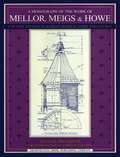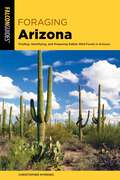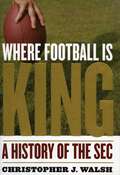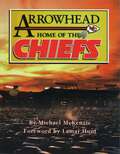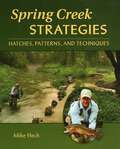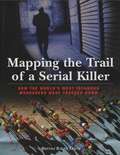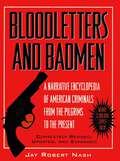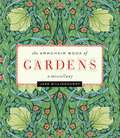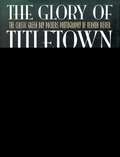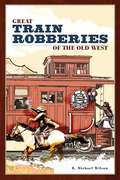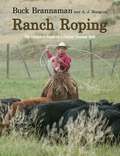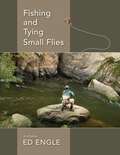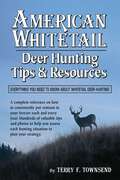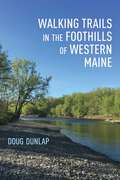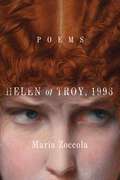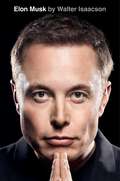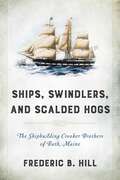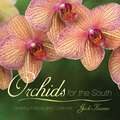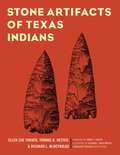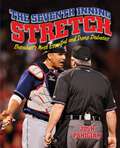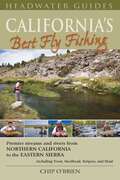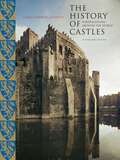- Table View
- List View
A Monograph of the Work of Mellor, Meigs, & Howe
by Owen Wister James S. CollinsOriginally published in 1923, this documents the work of the famous Philadelphia-based firm which designed many outstanding residences in Mid-Atlantic and New England states.
Beer Lover's Texas: Best Breweries, Brewpubs & Beer Bars (Beer Lovers Series)
by Mike CortezBeer Lover's Texas features state-wide breweries, brewpubs and beer bars for those looking to seek out and celebrate the best brews--from bitter seasonal IPAs to rich, dark stouts--their cities have to offer. With quality beer producers popping up all over the nation, you don't have to travel very far to taste great beer; some of the best stuff is brewing right in your home state. These comprehensive guides cover the entire beer experience for the proud, local enthusiast and the traveling visitor alike, including information on: - brewery and beer profiles with tasting notes- brewpubs and beer bars- events and festivals- food and brew-your-own beer recipes- city trip itineraries with bar crawl maps- regional food and beer pairings
Jimmy the Beet Truck
by Molly PearceAfter hard-working Jimmy is chided by a conceited tractor trailer named Mack, he comes to realize that in life everyone has an equally important role to play. Full-color illustrations.
Foraging Arizona: Finding, Identifying, and Preparing Edible Wild Foods in Arizona (Foraging Series)
by Christopher NyergesArizona is a diverse area from the Colorado Plateau to the lowland basin and range areas of the Sonoran desert. Foraging Arizona addresses all the traditional plants from mesquite, amaranth, and cactus fruits, to the common urban weeds such as purslane, mallow, and lambs quarter. You'll learn about the edible wild foods and healthful herbs of Arizona. Organized by botanical families with a helpful guide to the environmental zone, this is an authoritative guide for nature lovers and gastronomes. Use Foraging Arizona as a field guide or as a delightful armchair read. No matter what you're looking for, whether it&’s history of how native plants were used or how you can forage some of your meals at home or on hiking trips, this guide will enhance your next backpacking trip or easy stroll around the garden.Inside you'll find:Detailed descriptions of edible plantsTips on finding, preparing, and using foraged foodsA glossary of botanical termsFull-color photos
Where Football Is King: A History of the SEC
by Christopher J. WalshArguably the best football conference in America, the Southeastern Conference (SEC) contains some of the most storied programs in the history of college football. In Where Football is King, Christopher Walsh provides a team-by-team history of the SEC and describes the classic games, players and coaches in the conference's seventy-three-year history.The genesis of the SEC really begins with the introduction of football to the University of Georgia in 1891 by a chemistry professor, Charles Herty. While Georgia's first game was against Mercer University that Fall, the South's oldest rivalry was born when Georgia took on Auburn on February 20, 1892 at Atlanta's Piedmont Park. From there, Walsh recounts, the sport took off like wildfire, and the SEC was able to formally organize some four decades later. Originally a thirteen-team conference, through attrition and addition the SEC eventually became comprised of Georgia, Auburn, Vanderbilt, Florida, Alabama, Mississippi, LSU, Kentucky Tennessee, Mississippi State, South Carolina, and Auburn.From his unique vantage point as beat writer for Alabama football for the Tuscaloosa News, Walsh also gives insight into the culture and traditions of football in the South, where, it is said (and probably widely believed), the game is "greater than religion." Legendary figures and legendary games pass through the pages Where Football is King: players such as Joe Namath, Ken Stabler, Herschel Walker, Terrell Davis, and Payton Manning, and games such as the "Iron Bowl," the intense annual rivalry between Auburn and Alabama. As colorful as the SEC is competitive, this history will be essential reading for any fan of the game of football.
Arrowhead Home of the Chiefs
by Michael McKenzieArrowhead: Home of the Chiefs is a monument to imaginative and aesthetic sports arena architecture, still after 25 seasons. While other arenas of its era are being replaced, Arrowhead continues to draw compliments as the best there is for football. Relive 25 years of Kansas City Chiefs football history in Arrowhead: Home of the Chiefs, the official history of the Kansas City Chiefs and Arrowhead Stadium.
Spring Creek Strategies
by Mike HeckStrategies for selective trout in clear water New patterns designed for spring creeks and how to fish them Simple explanations of the major hatches on spring creeks across the country Spring creeks, those rare waters that flow right out of the earth--in whole or in part--are both a blessing and a curse for anglers. They are a blessing because the clear, cold, nutrient-rich waters grow abundant insects, which in turn grow and sustain large populations of healthy trout. They flow free of ice in the winter and run cool during the hottest parts of summer, providing year-round angling. In many ways, this bounty becomes a curse, because the abundance and steady supply of food can spoil the trout, making them less likely to take a piece of fluff and feathers. Many spring creeks are also small, their challenges enhanced by weed-choked runs and tricky currents.Mike Heck, expert fly tier and guide from southcentral Pennsylvania, the cradle of American spring-creek country, shares the tactics and techniques he teaches his clients to catch these tough trout. Heck includes his top fly patterns, tips on matching the major hatches of Tricos, Baetis, and Sulphurs (PMDs), and his thoughts on stealth and presentation. Whether you fish Letort Spring Run in Carlisle, Pennsylvania, or DePuy's Spring Creek in Livingston, Montana, Heck's Spring Creek Strategies will help you become a more successful angler.
Knack Home Repair & Maintenance: An Illustrated Problem Solver (Knack: Make It Easy)
by Terry MeanyWhat you can fix, what you can't, and what to do until help arrives
Mapping the Trail of a Serial Killer: How The World's Most Infamous Murderers Were Tracked Down
by Brenda LewisA fully illustrated, innovative look at the killing sprees of twenty-five notorious killers*The idea of the wandering murderer, leaving a trail of mutilated bodies in his wake, has long fascinated followers of true crime. By charting the geography of the killer&’s actions, Mapping the Trail of a Serial Killer takes an innovative geographical approach to exploring the killing sprees of twenty-five notorious murderers from the early-twentieth century right up to the present day. With specially commissioned maps pinpointing each killer&’s actions, and archival photographs, this book reveals patterns of behavior and provides fascinating insight into the minds behind some of the world&’s most shocking crimes. Most of the cases examined are from recent decades, and include the Beltway sniper attacks in Washington, D.C., as well as those of:Ted Bundy—Murdered and sexually assaulted at least thirty-five young women across America beginning in 1973. Executed in 1989.David Berkowitz &“Son of Sam&”—Confessed to killing six people and wounding seven in the course of eight shootings that held New York City in terror between 1976 and 1977.Peter Sutcliffe—Dubbed the Yorkshire Ripper, this English killer was convicted in 1981 for murdering thirteen women. Andrei Chikatilo—Convicted of the murders of fifty-two women and children, mostly in southern Russia, between 1978 and 1990.
Bloodletters and Badmen
by Jay Robert NashA narrative encyclopedia of American criminals from the pilgrims to the present.
Armchair Book of Gardens: A Miscellany
by Jane BillinghurstThe Armchair Book of Gardens is a collection of indiviual essays focused on understanding gardens in a different light/perspective. The book concentrates on the emotional, social, spiritual, and politicial aspects of the garden.
The Glory of Titletown: The Classic Green Bay Packers Photography of Vernon Biever
by Vernon BieverThere is no one who knows the Green Bay Packers story better than the man who has caught every tackle, touchdown and interception with a click of his shutter. Now in paperback, more than 150 of the best photos from Vernon Biever's historic archive have been gathered into one keepsake volume. The Glory of Titletown is a celebration of both sports photography and the game of football, a sincere appreciation of a gifted photographer, and an inspiring tribute to a spectacular team. From the early days of Curly Lambeau to the fabled Lombardi era and Super Bowl XXXI champions, Biever provides a unique photo album of Packers football.
Great Train Robberies of the Old West
by R. Michael WilsonDuring the 1800s trains carried the nation's wealth throughout the east, but no one thought to rob a speeding train until 1866. In 1870 the first western train was robbed in Nevada and within hours a second train was robbed. Railroads made every alteration to their cars and changed every procedure they could imagine to thwart the robbers, but to no avail. Robbing trains became epidemic over the next five decades, even when the legislatures made train robbery a capital crime. A few of the hundreds of train robberies stand out as thrilling and dangerous affairs, and the greatest of these (15-20) are included in this book.
Ranch Roping: The Complete Guide To A Classic Cowboy Skill
by Buck Brannaman A. J. MangumRanch roping is at the heart of all ranch work, and unlike the rodeo variation of calf roping, the &“vacquero&” tradition calls for techniques that result in a skillful and graceful throw and catch. Buck Brannaman, a world-renowned master of the art, describes the essential tools, the partnership between horse and rider (incorporating the Natural Horsemanship approach for which the author is famous), and the mechanics needed to become a successful ranch roper, whether in competition or in actual cattle work.One-hundred full-color photographs of Buck in action enhance the step-by-step methodology that leads to mastering this essential Western skill. Whether you ride or rope or just wish you could, here&’s a book for everyone who is captivated by Western traditions and contemporary life.
Fishing and Tying Small Flies
by Ed EngleWhen fishing gets tough, fly fishers might be tempted to use bigger, flashier flies, but expert angler Ed Engle knows that tiny, sparsely dressed flies often work when nothing else will. With a little attention to tying the flies and fishing technique, fly fishers will take trout on flies as small as 24, 28, and even 30. Now combining his two classic books on small fly tying and fishing in one updated, second-edition volume, Engle covers the patterns and how to fish them. You&’ll learn how to find and observe trout in small-fly water, how to evaluate the major small-fly hatches, how to fish the surface and below, and how to strike, play, and land trout on tiny flies. Engle deftly covers small-fly history and how the flies have developed. Tying tools, special materials, specific patterns for aquatic insects, tying techniques, and a full complement of patterns complete the book.
American Whitetail: Deer Hunting Tips & Resources—Everything You Need to Know About Whitetail Deer Hunting
by Terry F. TownsendThis comprehensive "how to" book is for both the beginner and the experienced hunter, and contains hundreds of valuable tips, photos, and illustrations whether hunting with a bow, rifle, or muzzleloader. It explains the best methods for tracking and recovering a deer, and how to field dress, skin out, butcher, and package your venison for the freezer. The book also details such deer-country hazards as ticks and venomous snakes, reviews basic safety issues, and lists hundreds of resources for everything from outfitters and guides to hunting supplies. American Whitetail even includes a chapter on reaping the rewards of a successful hunt with twenty-five great venison recipes.
Walking Trails in the Foothills of Western Maine
by Doug DunlapThe foothills of western Maine, specifically in the Farmington and Wilton regions are rife with path and trails just begging to be explored on foot. The wilderness walks in this guide are just right for those who don't have the time or energy for a longer or more strenuous hike, making them perfect for families with older or younger members. The twenty outings lead walkers along lakes, rivers, and forests and include waterfalls and prime wildlife viewing areas. The routes can be used for daily exercise or as a connected series of outings for a more wide-ranging experience. Included are maps, practical tips and safety advice, and suggestions for walking with kids and dogs.
Helen of Troy, 1993: Poems
by Maria Zoccola*A New York Times Book Review Editors&’ Choice Pick* &“By turns hilarious and provocative, it&’s an affecting character study and modern mythic retelling.&” —Publishers Weekly, Books That Should Be on Your Radar in 2025 Part myth retelling, part character study, this sharp, visceral debut poetry collection reimagines Helen of Troy from Homer&’s Iliad as a disgruntled housewife in 1990s Tennessee.In the hills of Sparta, Tennessee, during the early nineties, Helen decides to break free from the life that stifles her: marriage, motherhood, the monotonous duties of a Southern housewife. But leaving isn&’t the same thing as staying gone… Rooted in a lush natural landscape, this stunning poetry collection explores Helen&’s isolation and rebellion as her expansive personality clashes with the social rigidity of her small town. In richly layered poems with settings that range from football games to Chuck E. Cheese to the bathroom of a Motel 6, Helen enters adulthood as a disaffected homemaker grasping for agency. She marries the wrong man, gives birth to a child she is not ready to parent, and embarks on an affair that throws her life into chaos. But she never surrenders ownership of her story or her choices, insisting to the reader: &“if you never owned a bone-sharp biography… / i don&’t want to hear it. i want you silent. / i want you listening to me.&” Blurring the line between mythology and modernity, Helen of Troy, 1993 is an unforgettable collection that shows the Homeric Helen like she&’s never been seen before.
Elon Musk
by Walter IsaacsonFrom the author of Steve Jobs and other bestselling biographies, this is the astonishingly intimate story of the most fascinating and controversial innovator of our era—a rule-breaking visionary who helped to lead the world into the era of electric vehicles, private space exploration, and artificial intelligence. Oh, and took over Twitter.Australian Financial Review Top 20 Read for 2023 When Elon Musk was a kid in South Africa, he was regularly beaten by bullies. One day a group pushed him down some concrete steps and kicked him until his face was a swollen ball of flesh. He was in the hospital for a week. But the physical scars were minor compared to the emotional ones inflicted by his father, an engineer, rogue, and charismatic fantasist. His father&’s impact on his psyche would linger. He developed into a tough yet vulnerable man-child, prone to abrupt Jekyll-and-Hyde mood swings, with an exceedingly high tolerance for risk, a craving for drama, an epic sense of mission, and a maniacal intensity that was callous and at times destructive. At the beginning of 2022—after a year marked by SpaceX launching thirty-one rockets into orbit, Tesla selling a million cars, and him becoming the richest man on earth—Musk spoke ruefully about his compulsion to stir up dramas. &“I need to shift my mindset away from being in crisis mode, which it has been for about fourteen years now, or arguably most of my life,&” he said. It was a wistful comment, not a New Year&’s resolution. Even as he said it, he was secretly buying up shares of Twitter, the world&’s ultimate playground. Over the years, whenever he was in a dark place, his mind went back to being bullied on the playground. Now he had the chance to own the playground. For two years, Isaacson shadowed Musk, attended his meetings, walked his factories with him, and spent hours interviewing him, his family, friends, coworkers, and adversaries. The result is the revealing inside story, filled with amazing tales of triumphs and turmoil, that addresses the question: are the demons that drive Musk also what it takes to drive innovation and progress?
Ships, Swindlers, and Scalded Hogs: The Rise and Fall of the Crooker Shipyard in Bath, Maine
by Frederic B. HillBrothers William Donnell Crooker and Charles Crooker were among the most prominent mid-nineteenth-century shipbuilders in Bath, Maine, itself one of the most prominent shipbuilding cities in the world during that time. This colorful history of the Crookers' company by the great-great grandson of William Donnell provides a thorough overview of a family, its contributions to shipbuilding, and the historic sweep of shipbuilding in the area, as well as a fascinating glimpse into everyday life in Maine during this time. Today, a small portion of Maine's twenty-first-century shipbuilder, Bath Iron Works, occupies land that was once the Crooker yard.
Orchids for the South: Growing Indoors and Outdoors
by Jack KramerFlamboyant and fantastic, orchids are the world's most highly prized plants—yet home growers think they're difficult to grow. Orchids don't have to be a challenge: the secret is to find plants that share similar growing conditions. With more than 100 breathtaking color photographs and easy-to-follow diagrams, this book is the perfect choice for Southern gardeners who want to add glamour to their home or garden.
Stone Artifacts of Texas Indians
by Thomas R. Hester Ellen Sue Turner Richard L. McReynoldsUseful for academic and recreational archaeologists alike, this book identifies and describes over 200 projectile points and stone tools used by prehistoric Native American Indians in Texas. This third edition boasts twice as many illustrations—all drawn from actual specimens—and still includes charts, geographic distribution maps and reliable age-dating information. The authors also demonstrate how factors such as environment, locale and type of artifact combine to produce a portrait of theses ancient cultures.
Seventh Inning Stretch: Baseball's Most Essential and Inane Debates
by Josh PahigianThe Seventh Inning Stretch, by noted baseball expert Josh Pahigian addresses all of the most interesting baseball arguments, however frivolous, that fans have been engaging in for decades, and even a few they may have never stopped to consider before.
California's Best Fly Fishing
by Chip O'BrienWhether you want to crack the code of Northern California's legendary wild-trout waters, learn the best floats on the Sac, or fish for steelhead, stripers, and shad on the American River, this guide is the best place to start for a successful fishing trip. With stunning photos, detailed maps and hatch charts for each river, photos and recipes of the most effective fly patterns, and insider information from local guides and outfitters, California's Best Fly Fishing is an essential reference for the best fishing in the state.
History of Castles, New and Revised
by Christopher GravettThe History of Castles is the ultimate guide to the world&’s most fascinating castles and strongholds. Chapters include information on castles from France, England, Wales, Scotland, Ireland, Germany, Austria, Switzerland, the Iberian Peninsula, Italy, Scandinavia, Eastern Europe, Russia, and the Middle East. An ideal book for history enthusiasts, people planning to take a vacation near one of these castles, and for anyone who is enamored of these breathtaking buildings.
